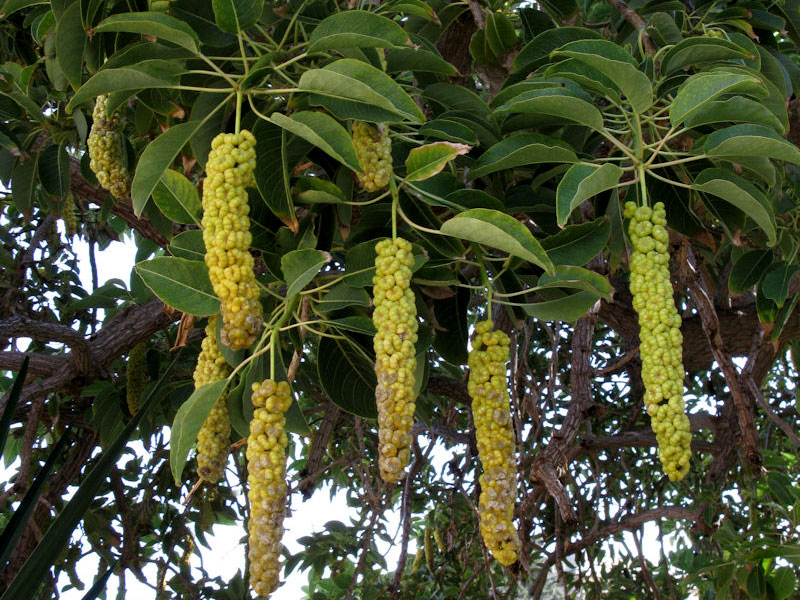Belhambra (Phytolacca dioica)
This large, soft-wooded, semi-evergreen tree can grow up to 20 metres tall with an impressive buttressed trunk. The leaves and stems are succulent. It has bright green leaves, oval-shaped leaves with smooth margins. Creamy-yellow flowers appear from September to December in 10cm long clusters with male and female flowers appearing on separate trees from . The berry-like fruits start off green then turn black.
